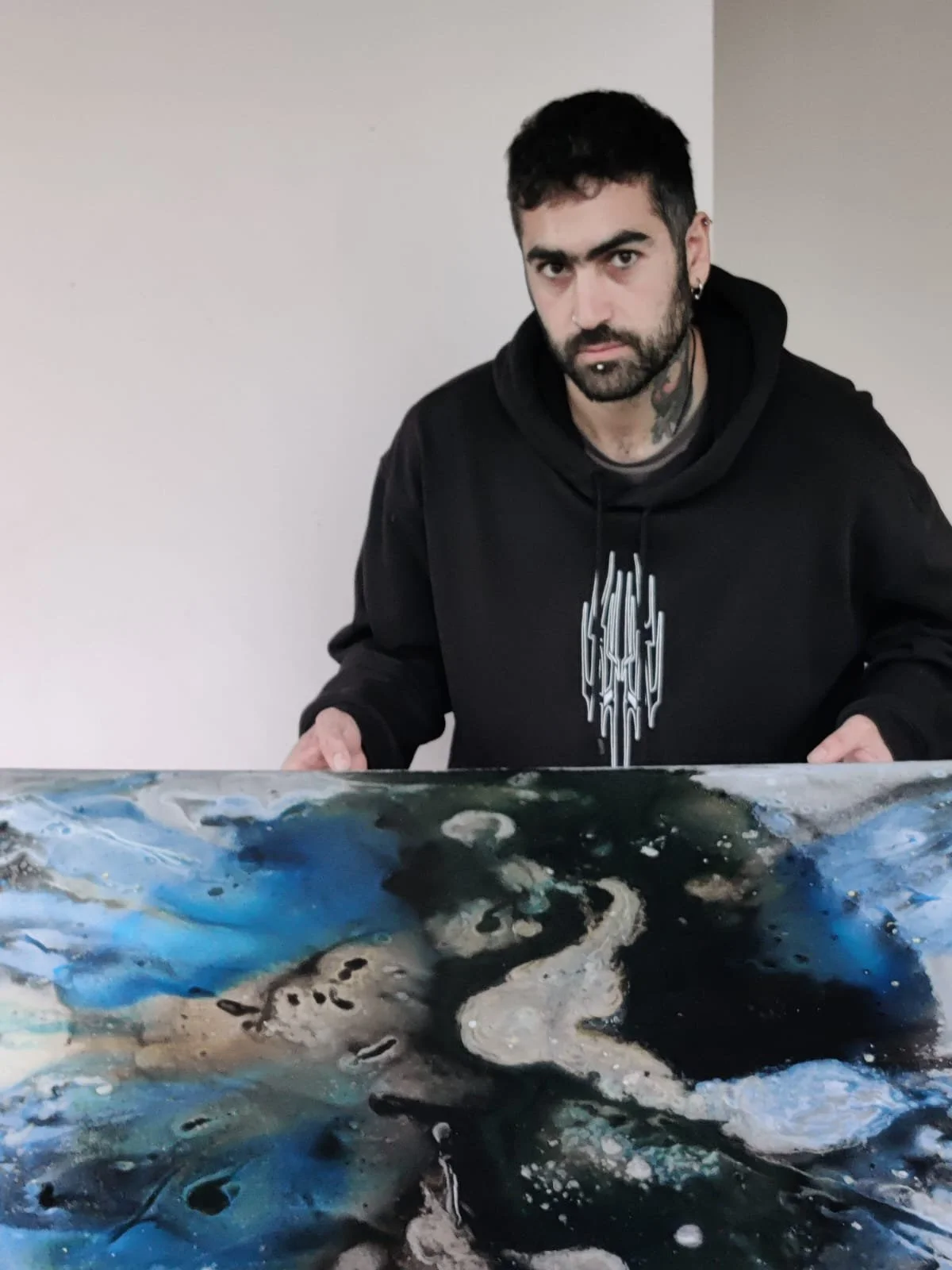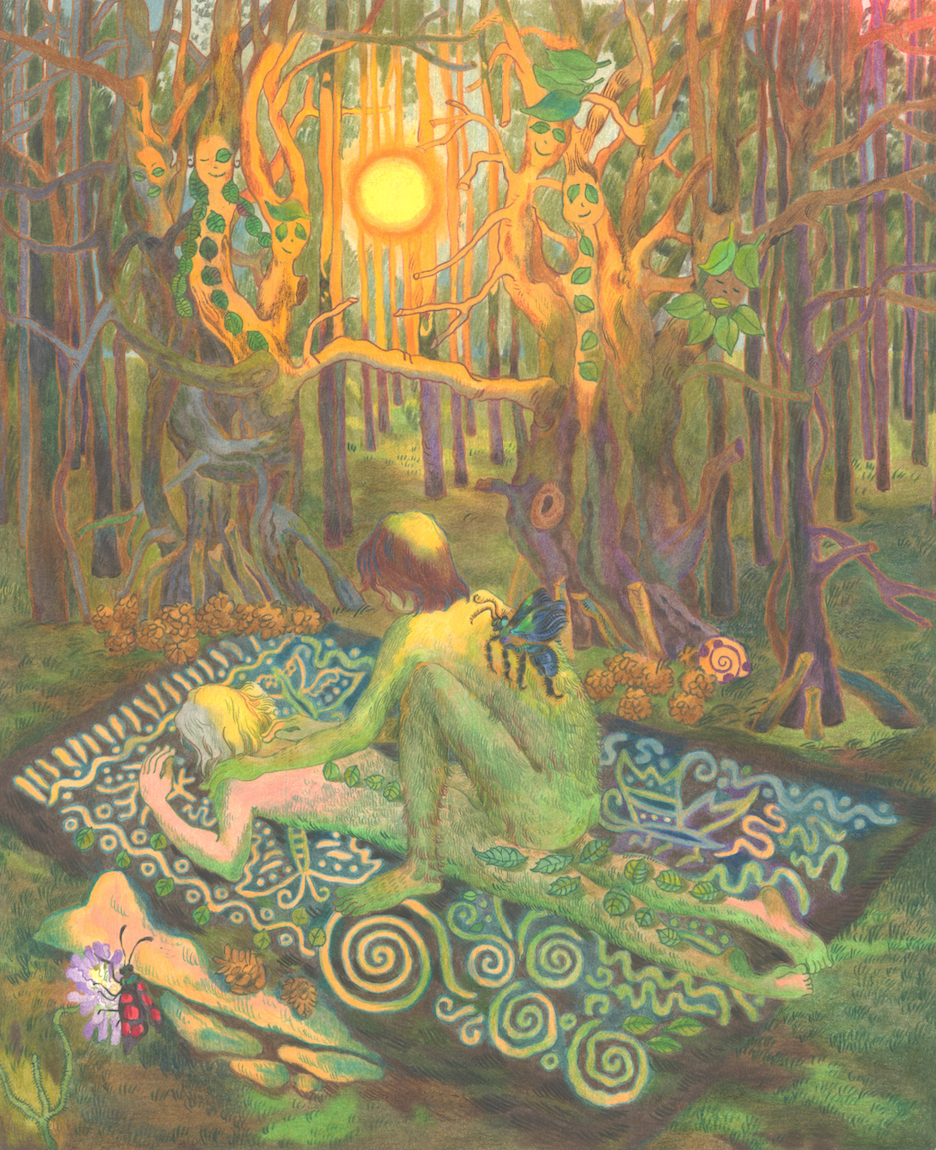10 Questions with Julia Lehmann
Julia Lehmann is a philosopher, writer, translator, and artist whose practice is deeply intertwined with her explorations of language, humanity, and the natural world. Originally from Berlin, Lehmann's early years were marked by an insatiable curiosity, shaped by her studies and experiences navigating the vibrant streets of the city. She explored diverse roles, from bartending and working in hostels to engaging with NGOs and freelance writing, all while experimenting with artistic expression through unconventional materials like glass, menstrual blood, and typewriters.
Lehmann's life is a tapestry of travel, learning, and linguistic exploration. Her global journeys have fueled her creative and intellectual pursuits, providing a profound understanding of human and natural beauty while enriching her multilingual sensibilities. For Lehmann, words are not just tools but the essence of her existence and creative practice.
Now based in Portugal, surrounded by forests, rivers, and mountains, Lehmann continues to delve into her passions, merging her philosophical and artistic endeavors with the tranquility and inspiration of her natural surroundings.
Julia Lehmann - Portrait | Ph. Kateryna Myronenko
ARTIST STATEMENT
Exploring the boundary between text and image, or writing images from text, or painting images with text, the parts then form a new whole, fragments of a female voice. The typewriter is the tool to hide, to love, to seek, to find, to hope, to think.
Traces Of You, Typewriting, 46 x 28 cm, 2024 © Julia Lehmann
INTERVIEW
How did your journey as an artist and writer begin, and what inspired you to use art as a form of expression?
For as long as I can remember, I've held a pen between my fingers, crafting small stories or scribbling in my diary since learning to write as a child. Writing became my refuge – a way to express the thoughts I couldn't share with others. It wasn't until my mid-twenties that I found people I could truly open up to and feel understood by. Until then, writing served as my voice, a way to think out loud, as though confiding in an invisible friend.
My journey into art, including typewriter creations and my works with my menstrual blood, began during some of the darkest moments of my life. At a time when I felt profoundly lonely and unable to connect with the outside world, art became my outlet. It allowed me to process and release my emotions, bringing me solace and lifting my spirits.
Filling The Emptiness, Typewriting, 21 x 29,7 cm, 2024 © Julia Lehmann
From Berlin to Portugal, how have these vastly different environments influenced your creative process?
Growing up in the city exposed me to a wide range of experiences. I encountered people from different backgrounds, which helped me understand the variety of human actions, thoughts, and behaviors. I observed freedom, despair, love, andconnections on multiple levels, different lifestyles, sexes, and genders, dysfunctional relationships, feelings of senselessness, ambition and self-doubt, misery, societal injustice, and creativity – all the complexities of life. I absorbed everything I saw, always on the move, taking in as much as the world had to offer. My extensive travels across many countries, where I worked, studied and traveled around, also became a rich source of inspiration.
I constantly yearned for a time when I could sit down and transform all these experiences into art. There were moments when I managed to create, but I never had the right space, solitude, or conditions to fully immerse myself in my work. It wasn't until I moved to Portugal and bought a house with a huge land in the mountains, surrounded by forests, that I finally found everything I needed – peace, seclusion, and the perfect environment to dedicate myself to my art.
Your work explores the boundary between text and image. Can you explain how you approach creating these unique pieces?
The typewriter allows me to merge my two passions – words and the creation of art – into one cohesive expression. I don't see them as separate entities, nor do I want to distinguish between them. With the typewriter, I can create more freely than when writing traditional texts while still playing with language and shaping words into meaningful forms.
Often, one element comes to me first. If it's a word or a sentence, like the piece Hide Me, I think about how I can mold it into a form that amplifies its meaning, brings out its essence, or even contrasts with it. On other occasions, I might start with an image in my mind, such as words flowing into a wave. Then, I explore which words can convey that idea visually and use my typewriter to arrange them on paper to form the wave. This may involve turning the paper, layering text, or carefully positioning the words to bring the concept to life.
It's a process of merging text and form, where words become shapes and shapes carry the essence of the words.
There Where Here, Typewriting, 22,5 x 22,5 cm, 2024 © Julia Lehmann
Nolo, Typewriting, 22,5 x 22,5 cm, 2024 © Julia Lehmann
What role does the typewriter play in your art, both symbolically and practically?
I could also work on a laptop, writing something there and printing it out, but it doesn't offer the same freedom as using a typewriter. With a typewriter, I can feel the paper, move it around on the platen, and see the immediate result of my actions. The letters typed on paper also have a different quality compared to those produced by a printer.
What's more, I enjoy the physical limitations (such as the size of the paper, the color, and the font) it imposes, which often spark new creative approaches.
Furthermore, it feels more focused, as I'm disconnected from the digital world – just me and the analogue machine. There's something more elemental about the process of writing this way. At the same time, it allows me to achieve the precision of identical letters, which I wouldn't get by hand.
You've used materials like glass and menstrual blood in your sculptures. How do you choose the mediums that best convey your ideas?
Lately, I have almost exclusively used the typewriter to express my ideas. It feels like the typewriter is the only medium that allows me to play with both words and images in the way I envision, as I mentioned above.
My previous work with glass and menstrual blood marked a specific period in my artistic journey. The glass, in particular, was used during times when I felt most fragile, helping me process difficult emotions and ultimately accept myself more fully. The fragility of glass mirrored the vulnerability we all sometimes experience in life.
Working with menstrual blood, on the other hand, was a reaction to a deeply political issue: the taboo surrounding menstruation. As a feminist, this issue has bothered me since my school days. It became a way to challenge the stigma to show that menstruation is nothing to be ashamed of. It also allowed me to confront something that causes me physical pain every month – my menstruation and the associated cramps – helping me accept that menstruation is something I can't fight or avoid but rather is a natural part of my body that I must embrace. At the same time, I am aware that this pain could be mitigated if more attention and funding were directed toward research into menstrual health issues like endometriosis.
Time Slot Of Loneliness, Typewriting, 22,5 x 22,5 cm, 2024 © Julia Lehmann
Do you see writing as a form of art or a form of writing, or do they blend seamlessly in your work?
Both art and writing are intertwined and cannot be easily distinguished from one another. The choice between writing, typewriting, or something completely different – like my work with menstrual art – depends on what I wish to express. Each medium offers a unique way to convey my message, and I select the one that best transports the idea I want to communicate.
Your artist statement mentions fragments of a female voice. How do you explore and express femininity through your art?
Having studied philosophy, I am accustomed to elaborating on topics such as gender equality or the complexities of love and hate in long texts. However, art allows me to express contemporary issues facing women – like inequality in relationships, communication struggles, and toxic masculinity – in a more intuitive way. It gives me a means to express my own personal struggles as a woman in this world, with emotions that, from a feminist standpoint, I may recognize as problematic, yet I cannot easily escape from, given that I was raised in a patriarchal society. Through my art, I am able tocommunicate feelings of unfulfilled love, sadness, and the experience of being a woman without judgment and without the pressure to rationalize or suppress them.
Travel and communication seem central to your identity. How do these experiences shape the themes you explore in your work?
Traveling and the languages I've learned while living abroad have expanded my understanding of language and words.The languages I've acquired provide me with a richer repertoire from which to draw when experimenting with words on the typewriter. I can play with words in different languages. For instance, sometimes, it's easier to express certain ideas in Portuguese or English. However, there are instances when specific expressions only work in German. For example, the piece Wiederholung comes from a text I wrote at university, and it doesn't have the same meaning in another language.
The word "Wiederholung" in German has a unique nuance that doesn't translate directly into English. It's derived from two parts: "wieder" (again) and "holen" (to fetch or to get). Together, Wiederholung literally means "the act of fetching again", emphasizing the idea of something being repeated or brought back. It also carries the sense of returning to something previously encountered, with the implication of re-engaging with a pattern or state. This nuance isn't fully captured by the English word "repetition."
The image I've created is a visual representation of this very concept. It tries to "fetch" the same word again through repetition, yet it's never exactly the same. Each repetition introduces a slight shift, meaning it's never a mere duplication but a new word placed next to the previous one.
Wiederholung, Typewriting, 22 x 22 cm, 2024 © Julia Lehmann
The Absolute Certainty Of Doubt, Typewriting, 15 x 30 cm, 2024 © Julia Lehmann
Are there any upcoming projects or ideas that you're particularly excited about?
For now, I'm working on a novel—let's see where it takes me. I prefer to focus on creating when I feel the urge rather than planning ahead or fixating on a specific outcome.
Lastly, how do you see your work evolving in the future, and are there new mediums or concepts you'd like to experiment with?
I'd like to create larger images using the typewriter and am exploring ways to make this possible. The typewriter's physical design limits me to a certain paper size, which presents a challenge. For now, I feel compelled to stick with the typewriter, as there are still many ways to experiment with it, and I don't yet feel I've fully explored its potential.
Artist’s Talk
Al-Tiba9 Interviews is a promotional platform for artists to articulate their vision and engage them with our diverse readership through a published art dialogue. The artists are interviewed by Mohamed Benhadj, the founder & curator of Al-Tiba9, to highlight their artistic careers and introduce them to the international contemporary art scene across our vast network of museums, galleries, art professionals, art dealers, collectors, and art lovers across the globe.






















